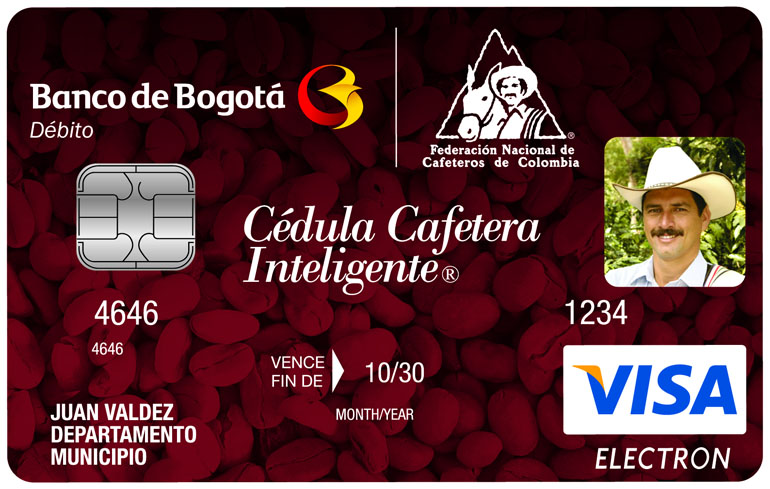There is nothing more pleasant than the smell of a freshly brewed cup of coffee. Drinking coffee has been a sacred morning ritual for many of us, but now it has turned into an all-day-long accompaniment. After lunch coffee, work break coffee, quick coffee catch-up with friends, you name it and it involves coffee. It is no surprise that the number of coffee shops in the European Union grew by 6% in 2018, and it is expected to continue growing at an annual rate of 4.8% every year (Ministry of Foreign Affairs 2019). Not only in Europe, but the United States as well as Asia has seen a coffee culture revolution. In fact, coffee is the second most traded commodity in the world, with 500 billion cups of coffee consumed in 2018 alone (How Digitalization Could Boost Colombia’s Coffee Production 2019).
Growing middle class, disposable income and a culture reinforced by immense amount of choice and accessibility have collectively influenced the continuous increase of global consumption of coffee. And as we all know very well from our previous Economic courses, if the increasing demand of coffee is to be met, supply will also need to rise. As one of the biggest producers of coffee, Colombian coffee farmers are being faced with a variety of challenges and opportunities arising from these changing dynamics. The Colombian coffee industry is one of the strongest export sectors with over US$2.5 billion worth of coffee exported in 2018 (How digital tools can help Colombian coffee growers 2017). As such, the Colombian government along with international companies are continuously working on introducing innovative practices and devices to the industry.
At present, a number of digital tools and initiatives that aim to improve farmer’s profitability and strengthen the overall sector are in place. For instance, an initiative from the National Coffee Growers Federation has created the Coffee Information System platform. This platform is a nationwide information database which collects and stores data from more than 520,000 coffee growers and their fields (How digital tools can help Colombian coffee growers 2017). Farmers are able to create profiles specific to their own land and crops. Every day, growers can report and update any changes in the production, temperature, diseases or status of their crops. This data can be used to track the quality of the beans and ensure overall higher yields. Additionally, it offers transparency along the value chain and supports potential involvement of sustainability efforts in the industry.
A variety of technological tools are being used to facilitate the cultivation process. Extremely accurate weather applications provide farmers detailed reports of weather patterns for their land to show how crops would be affected and what they can do to prepare for upcoming weather events that might disrupt the production of their beans. To tackle pest infestation and crop disease, an application which identifies the exact disease or pest that is affecting the harvest and offers possible solutions to treat the crop and prevent any further damage to future yields, has proven to be effective in over 90% of the time (How Digitalization Could Boost Colombia’s Coffee Production 2019). This allows farmers to react and have more control over the production and cultivation step in their value chain.
A major breakthrough came about with the introduction of “Smart Coffee ID” in 2006. This prepaid payment card was launched in cooperation with Banco de Bogota, and it replaced cash as a mode of payment. The introduction of a digital wallet allowed for faster and safe payments to coffee producers as well as improved the accessibility and distribution of government subsidies and bank credits. But more importantly, it aimed to tackle one of the biggest issues that farmers face in these remote farming areas, which are usually under the control of armed revolutionary forces. Receiving payments digitally meant that coffee farmers where protected against the difficult and dangerous situation of transporting cash in such rural areas. Nowadays, two-thirds of Colombia’s 531,000 coffee farmers use the Smart Coffee ID Card, which reports savings of $15.5 million from paying its growers digitally instead of in cash (Bokor 2016).
Even though recent developments and digitization efforts have definitely had a positive impact for Colombian Coffee producers, certain challenges remain to threaten coffee production in Colombia. Environmental challenges continue to be the main obstacle for feasible production and long-term sustainability of the value chain. With rising temperatures and climate change, the future of coffee is yet to be known. Could it be that coffee will become extinct?
References
Biz Latin Hub. 2019. How Digitalization Could Boost Colombia’s Coffee Production. [online] Available at: [Accessed 9 October 2020].
Bokor, M., 2016. Colombian Coffee Farmers Warm Up To New Digital Wallets. [online] Newsroom.cisco.com. Available at: [Accessed 9 October 2020].
Ministry of Foreign Affairs, 2019. What Is The Demand For Coffee On The European Market?. The Hague: CBI.
Mobile for Development. 2017. How Digital Tools Can Help Colombian Coffee Growers | Mobile For Development. [online] Available at: [Accessed 9 October 2020].


Hi Carolina,
Thank you for this very insightful and well-written blog article.
It is always very interesting to see on the variety of fields and industries, digitalization has an impact on. What i think is also intriguing, that for certain reasons like the stated danger of transporting cash through areas which are controlled by revolutionary forces, digitalization can happen in less developed environments before the technology has a wide-spread use in more developed countries. Especially regarding payment systems, it feels like that more developed countries, tend to hold on longer on cash-based transactions, compared to digital wallets.
Let’s discuss this topic in the future!
Best,
Denis